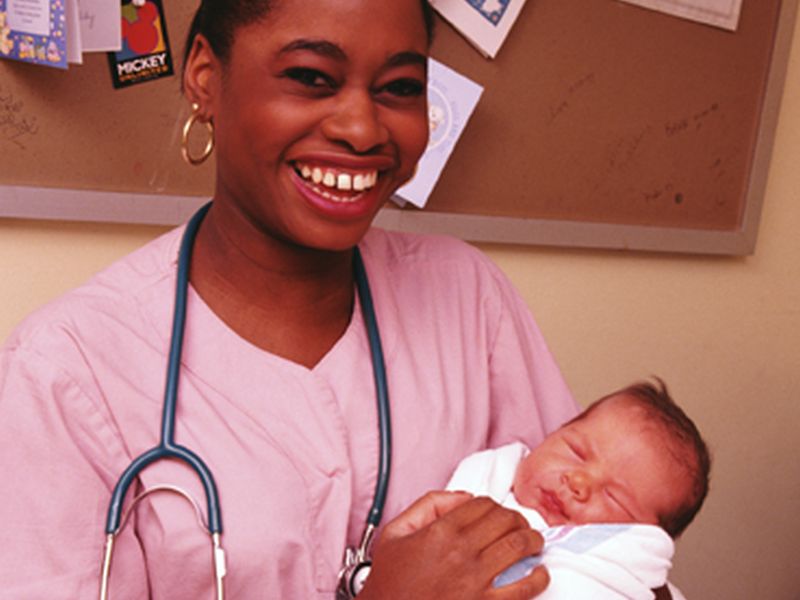
Wednesday, December 23, 2015


WEDNESDAY, Dec. 23, 2015 (HealthDay News) -- The number of U.S. women having babies rose last year for the first time since 2007, while births by teens fell to a record low.
Also lower in 2014 were the number of unmarried women giving birth, the number of cesarean deliveries and the preterm birth rate, federal health officials reported Wednesday.
"All of these are positive outcomes as far as infant health is concerned," said report coauthor Michelle Osterman, a health statistician at the U.S. Centers for Disease Control and Prevention's National Center for Health Statistics.
Dr. Mark DeFrancesco, president of the American College of Obstetricians and Gynecologists, said the new numbers show progress in women's health -- reflected in a record low in the teen birth rate, the decline in C-sections and a lower preterm birth rate.
"Better preventing pregnancies among teenagers means that more women will have the opportunity to complete school, perhaps pursue careers and wait until they are ready to begin families," DeFrancesco said.
"We particularly are pleased by the 8 percent drop in preterm birth since 2007 and the 3 percent drop in low birth weight since 2006," he added.
"This shows that more babies are starting off with a foundation for a strong, healthy life," DeFrancesco said. "And although cesarean deliveries will always be an important, life-saving part of obstetric practice, the decline in the cesarean rate shows that we are recognizing opportunities to avoid some cesareans and to counsel women toward successful vaginal births."
Highlights of the report include:
- Nearly 4 million births were registered in the United States in 2014, up 1 percent from 2013. Births rose for whites, blacks and Hispanics.
- The birth rate for 15- to 19-year-old mothers fell 9 percent between 2013 and 2014, to 24.2 births per 1,000 teens, a historic low.
- Birth rates also dropped to a record low for women in their early 20s. Rates rose for women in their late 20s, 30s and early 40s.
- The average age of a first-time mother rose in 2014 to 26.3, up from 26 in 2013.
- The birth rate for unmarried women fell for the sixth straight year, to 43.9 per 1,000 unmarried women aged 15 to 44.
- The cesarean delivery rate dropped for the second straight year to 32.2 percent of all U.S. births.
- The preterm birth rate (less than 37 weeks) was 9.57 percent, down slightly from 2013 and down 8 percent from 2007.
- The rate of low birth weight infants was 8 percent, unchanged from 2013, but 3 percent lower than the 2006 high of 8.26 percent.
"We are delighted to see the preterm birth rate continue to decline for the eighth consecutive year," said Dr. Siobhan Dolan, a professor of clinical obstetrics and gynecology and women's health at Albert Einstein College of Medicine/Montefiore Medical Center in New York City. "This is great news for moms and babies, and means that more newborns are getting a healthy start in life."
Several factors contributed to the improvement in preterm birth rates, said Dolan, also a medical adviser to the March of Dimes. These included fewer C-sections, giving low-dose aspirin to prevent pre-eclampsia in women with high-risk pregnancies, and offering progesterone treatments for all women with a prior spontaneous preterm birth. Helping women quit smoking and providing group prenatal care also helped, she added.
DeFrancesco said that "meaningful change in health care can take time, but these numbers show that it can be done."
The findings were published in the Dec. 23 edition of the CDC's National Vital Statistics Reports.
SOURCES: Michelle Osterman, health statistician, National Center for Health Statistics, U.S. Centers for Disease Control and Prevention; Mark DeFrancesco, M.D., president, American College of Obstetricians and Gynecologists; Siobhan Dolan, M.D., M.P.H., professor, clinical obstetrics and gynecology and women's health, Albert Einstein College of Medicine/Montefiore Medical Center, New York City, and medical adviser, March of Dimes; Dec. 23, 2015, CDC's National Vital Statistics Reports, "Births: Final Data for 2014"
HealthDay
Copyright (c) 2015 HealthDay. All rights reserved.
- More Health News on:
- Health Statistics
- Premature Babies
- Teenage Pregnancy





























.png)











No hay comentarios:
Publicar un comentario